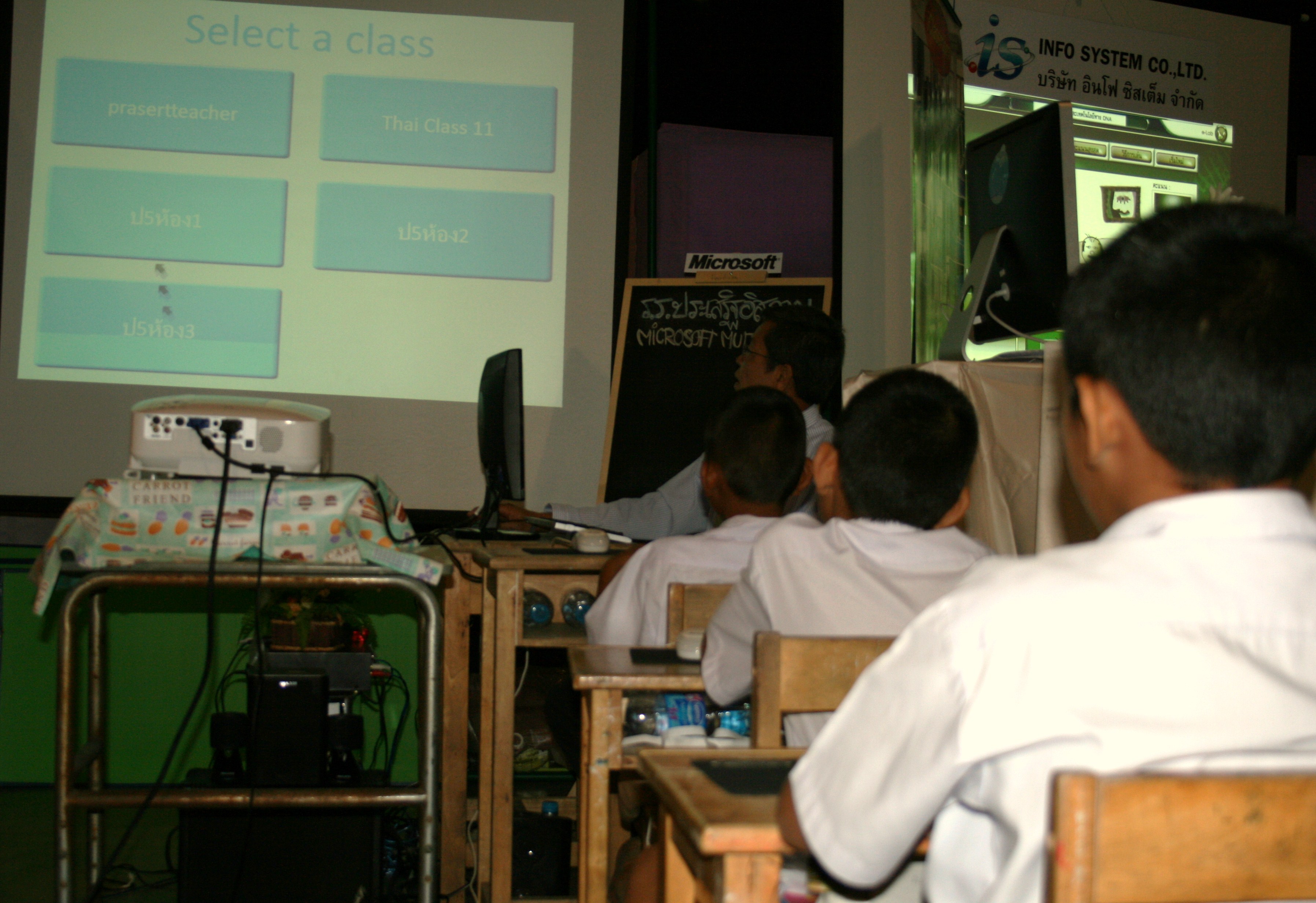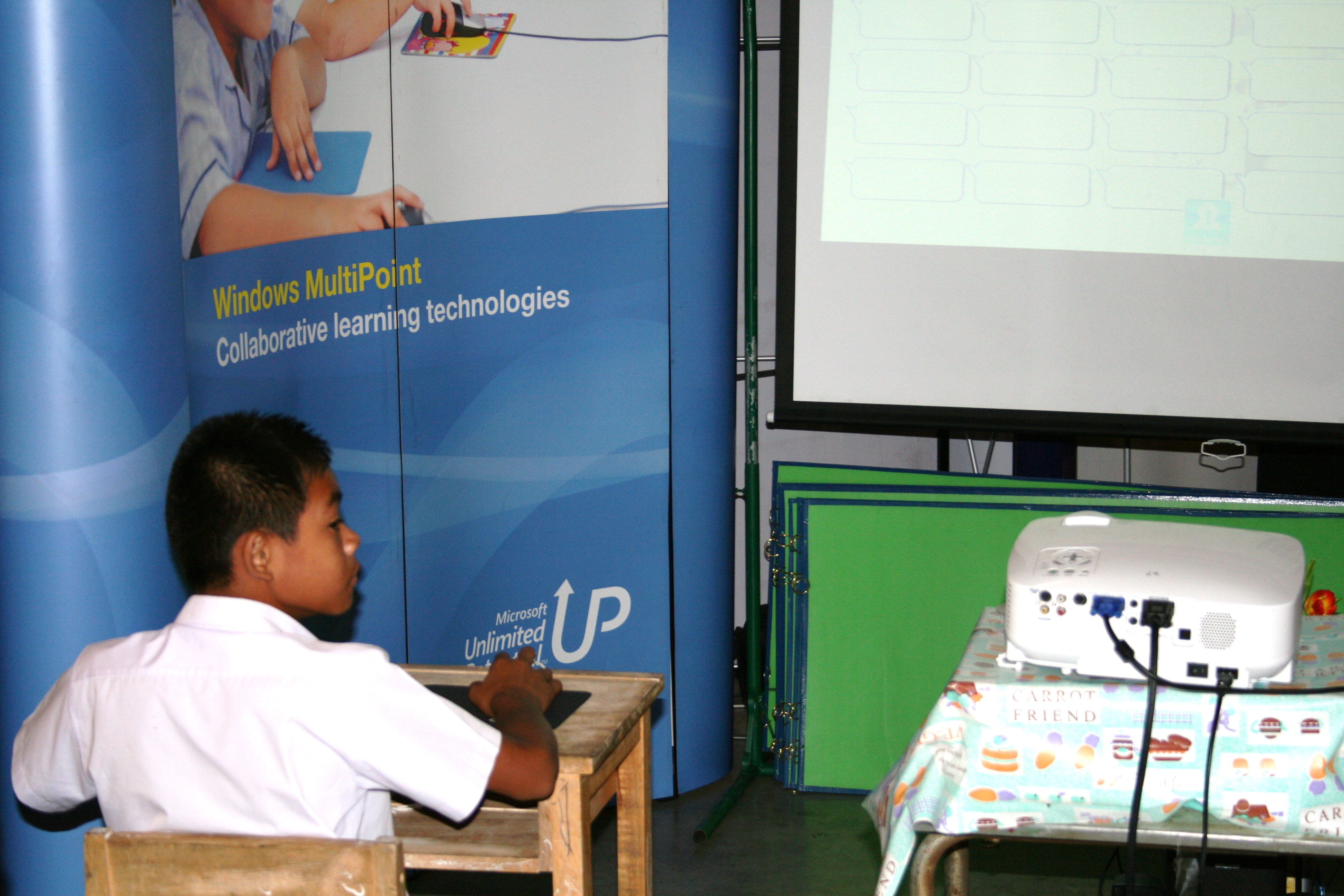The best laid schemes of mice and men, By Camille Mazo, business development manager, Unlimited Potential Group APAC
At first glance a line penned in 1785 by Scotland’s famous poet Robbie Burns and the modern Thai education system have very little in common, but it was this line that kept popping into my head as I watched a Windows MultiPoint demonstration in Bangkok recently. School desks, each containing a pupil in smart brown uniforms, were neatly lined up in pairs with a teacher at the front at another desk. The children were concentrating on a teacher demonstration on a screen at the front of the class. Nothing new here. But that is the interesting thing about MultiPoint – it doesn’t physically change the way that the classroom is ordered or lessons taught; it’s about using technology to open up the way children learn to a wider perspective, supporting teachers that want to teach in a different and more collaborative way, instead of “chalk and talk”.
MultiPoint allows users to connect up to 30 mice to one computer, enabling students to all use the same machine. The teacher controls the tasks from their terminal, which are projected onto a screen using an ordinary projector. The students can see the task as well as their mice cursors on the screen, and complete assignments together, against each other in a race, or individually. Teachers can also assign tasks to certain students if they want to. Not only does MultiPoint lower the per student price of investment per computer, it also creates a collaborative environment for teachers and pupils to feed off each other’s enthusiasm and get involved in the classes, according Uthai Panyapun, a science teacher for a class I was watching from the Prasert Islam school in Bangkok. She told me that before they started using MultiPoint it was difficult to track whether or not her students had understood.. With MultiPoint she finds that she is able to better track her students and get real time feedback from them as she is monitoring their progress from her terminal.
This accounts for the enthusiastic take-up by schools, government ministries for education and ICT right across Asia. Since the end of 2008, schools from Sri Lanka to the Philippines have enthusiastically take up the technology and have found that it lowers costs and barriers to technology access and helps improve classroom teaching.
Later that day I saw another benefit; local software developers have noticed the power of MultiPoint and are starting to develop applications for education using MultiPoint as a platform. They can download the Software Developer Kit for free from the Microsoft website and get developing. I met with a local Thai company, Reviva, which is aiming to have its first application available for schools in a matter of months. It is developing learning applications and customised quizzes for multiple mice for geography, English vocabulary, maths and many other subjects. This can only help broaden the appeal and value of MultiPoint, and encourage others in the local software economy to start producing software applications for use in schools. So far we have partners in Vietnam, Indonesia, Malaysia, Thailand and the Philippines all developing software for schools using MultiPoint.
Local software developed for local schools and local education. Many mice do not always make popular house guests as Burns discovered – I think in this case he would make an exception.

